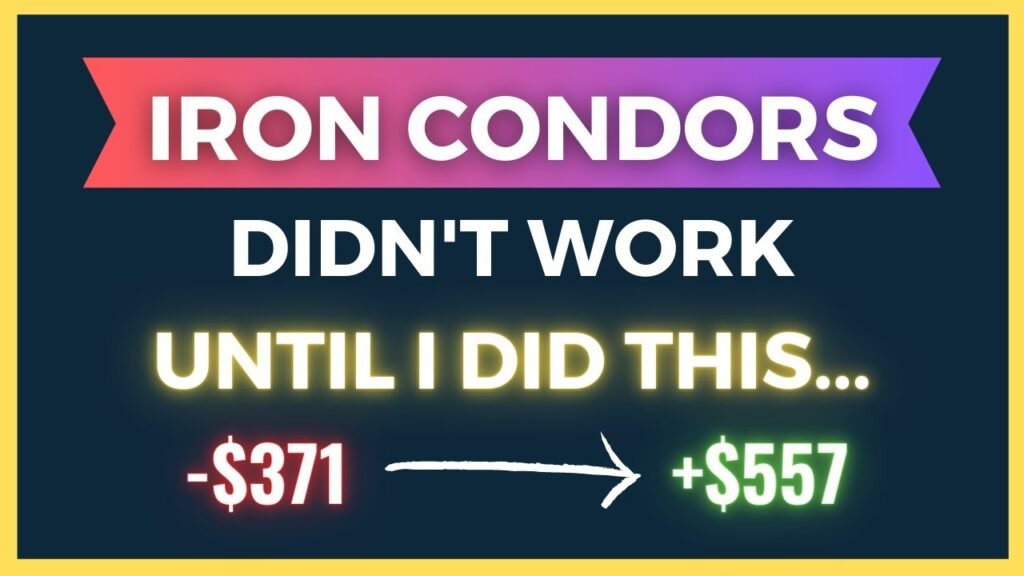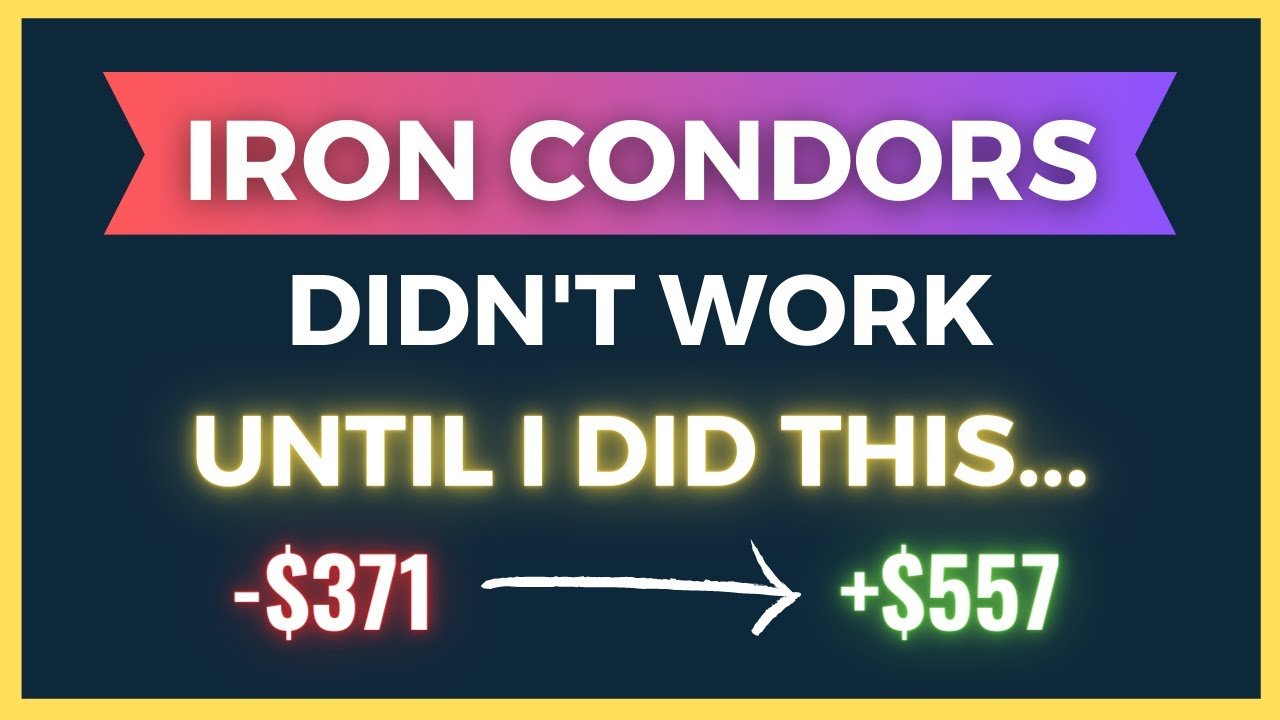Are you a complete beginner when it comes to managing losing Iron Condors? Well, you’re in luck! Options with Davis has created a video titled “The Complete Beginner’s Guide To Managing Losing Iron Condors” that provides expert guidance on effectively managing these trades to avoid further losses. This video covers everything from understanding the concept of skewed Iron Condors to discussing various strategies for managing losing trades. It also emphasizes the importance of managing options at 21 days to expiration for better results. So, if you want to learn how to handle losing Iron Condors the right way and mitigate potential losses, this video is a must-watch.
Options trading can be complex, especially for beginners, but fear not! Options with Davis is here to help. In their video “The Complete Beginner’s Guide To Managing Losing Iron Condors,” they dive into the world of high-probability consistent income strategies in options trading. This video covers everything from the NO.1 secret to being consistently profitable, to recurring profits with the Wheel Strategy, and mastering Covered Calls. Additionally, they specifically focus on managing losing Iron Condors, which can be different from managing losing credit spreads. With timestamped sections for easy navigation, this video aims to equip beginners with the knowledge and tools they need to effectively manage their Iron Condor trades. Don’t miss out on this valuable resource!
Understanding Iron Condors
Introduction to Iron Condors
Iron Condors are a popular options trading strategy that allows traders to profit from a range-bound market. It involves selling both a put spread and a call spread on the same underlying asset, with the goal of the price staying within a specific range until expiration. The potential profit in an Iron Condor trade is limited, but so is the risk.
Iron Condor PnL Graph
Understanding the profit and loss (PnL) graph of an Iron Condor trade is crucial for effective management. The PnL graph shows the potential profit or loss at expiration based on different underlying asset prices. It helps traders visualize the risk-reward profile of the strategy and make informed decisions.
Skewed Iron Condors
Skewed Iron Condors are a variation of the traditional Iron Condor strategy. In skewed Iron Condors, the width of the put side and call side is different due to put skew in index ETFs. This means that the options on the put side will be slightly more expensive than the options on the call side. Traders need to be aware of this skew and adjust their strategy accordingly.
Managing Options at 21 Days to Expiration
Managing Iron Condor trades becomes crucial as the expiration date approaches. Research suggests that managing options at around 21 days to expiration can yield better results. This is the point where options start losing extrinsic value rapidly, and adjustments need to be made to avoid potential losses.
High-Probability Consistent Income Strategies
Overview of Income Strategies in Options Trading
Income strategies in options trading aim to generate consistent profits by selling options and collecting premiums. Iron Condors are one of the income strategies that traders use. By understanding different income strategies, traders can diversify their options trading portfolio and potentially increase their profits.
The NO.1 SECRET to Consistently Profitable Trades
Consistency is the key to profitable trading, and understanding the NO.1 SECRET can greatly improve a trader’s success rate. This secret involves meticulous risk management, proper position sizing, and adhering to a well-defined trading plan. By implementing this secret, traders can increase their chances of consistently profitable trades.
Recurring Profits with the Wheel Strategy
The Wheel Strategy is an income strategy that involves selling puts on stocks that traders are willing to own if assigned. If assigned, traders can sell covered calls on the stocks to generate additional income. This strategy enables traders to earn recurring profits by systematically cycling through these steps.
Mastering Covered Calls
Covered calls are a popular income strategy where traders sell call options against an underlying asset they already own. By selling covered calls, traders collect premiums and potentially increase their returns. Mastering covered calls involves selecting the right underlying asset, strike price, and expiration date, as well as understanding potential risks.

Importance of Managing Iron Condor Trades
Avoiding Greater Losses
One of the crucial reasons for managing Iron Condor trades effectively is to avoid greater losses. If not managed properly, a losing Iron Condor trade can turn into a significant loss. By implementing proper risk management techniques and adjusting the trade when necessary, traders can limit their potential losses.
Managing Iron Condors vs. Credit Spreads
Managing Iron Condors is different from managing credit spreads. In credit spreads, traders only have to worry about one side of the trade (either the put side or the call side). However, in Iron Condors, both the put side and call side need to be monitored and managed. Traders need to have a clear understanding of the differences and adjust their approach accordingly.
Options for Managing Losing Iron Condors
Taking a Loss
One option for managing a losing Iron Condor trade is to take a loss and close the trade. This involves buying back the sold options and selling the bought options at a loss. This option is suitable when the trade starts moving against expectations, and it becomes unlikely for the price to stay within the desired range.
Rolling Out the Entire Iron Condor
Rolling out the entire Iron Condor involves closing the existing trade and opening a new Iron Condor with a later expiration date. This option allows traders to extend the duration of the trade and give the price more time to return to the desired range. However, it also increases the risk and potential loss if the price continues to move against expectations.
Closing Out the Untested Side and Rolling the Tested Side
When managing a losing Iron Condor trade, another option is to close out the side that has not been tested by the price movement and roll the side that has been tested. This strategy allows traders to reduce risk by closing out the untested side and adjusting the position on the side that needs to be managed.
Rolling the Entire Iron Condor and the Untested Side
Rolling the entire Iron Condor and the untested side involves closing the entire trade and simultaneously opening a new Iron Condor with a different width and/or strike prices. This option provides traders with more flexibility in adjusting the position to new market conditions and managing potential losses.
Conclusion
Managing Iron Condor trades effectively is crucial for avoiding greater losses and maximizing potential profits. By understanding the risk-reward profile, adjusting strategies for skewed Iron Condors, and implementing appropriate management techniques, traders can navigate the world of Iron Condors with confidence. Remember to stay disciplined, follow a well-defined trading plan, and be proactive when required.
